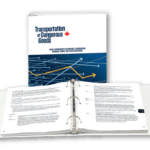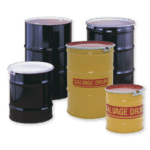
What if my Solids become Liquid During Transport
The various Dangerous goods regulations are clear-cut when it comes to the requirements of shipping solids vs liquids. A while back, I wrote an article that explains the UN packaging and testing requirements when it comes to shipping solids and liquids. But what if you are shipping solids that can become liquids? What rules would apply?
What do the Dangerous Goods Regulations Say?
If you are shipping solid dangerous goods that can become liquid during the course of transportation, the dangerous goods regulations have similar requirements domestically and internationally. For example, in the 49CFR 173.24 (e) (5), it says that packaging used for solids, which may become liquid at temperatures likely to be encountered during transportation, must be capable of containing the hazardous material in the liquid state. Similarly, in the TP14850 at 12.8.3 it says that a container intended for liquids must be used for solids that may become liquid at temperatures likely to be encountered during transport. When shipping internationally by air, IATA essentially says the same thing at 5.0.2.10, but they also are a bit more specific saying that packaging for solids (both inner and single), which may be permitted by the applicable packing instruction, should not be used if they are unsuitable for containing liquids such as paper or plastic bags as inner packaging and unlined fiber drums as single packaging, should not be used. The other difference here is it mentions that if single packagings are permitted for such substances, only single packaging approved for solid materials may be used.
What does this Mean for UN Packaging?
Per the regulations mentioned above, they all say that if solids can become liquids during transport, that the packaging used must be capable of containing the hazardous material in the liquid state, and a container intended for liquids must be used. This generally would mean that the packaging used should be UN tested to ship liquid dangerous goods per the test report. Additionally, factors such as ullage (the amount by which a container falls short of being full), hydrostatic pressure capabilities for inner packaging when shipping by air, and secondary means of containment per IATA would apply. The inner packaging used must have the capability to contain the dangerous goods if they become liquid, so using a paper bag as the inner packaging wouldn’t be allowed in this case because it would be unable to contain the product in its liquid form and would leak through. What I find to be the most interesting part of this is that IATA requires a single packaging to be used that is approved to ship solids, meaning single packaging that has not been leakproof or hydrostatic pressure tested, even though the product may turn to liquid during transportation. Other than that, the key here is if your product is capable of turning to liquid during transport, think about how the product will be contained in that form. If it seems that your packaging may not be suitable to contain liquids in cases like these, don’t use it, it’s better to be safe than sorry.
If you are interested in UN packaging that is compliant to ship both liquids and solid dangerous goods, we can help. Take a look at our UN Packaging FAQ or contact our team of experts at 855.734.5469 or send us an email, we’re happy to help.
Stay up to date and sign up for our newsletter!
We have all the products, services and training you need to ensure your staff is properly trained and informed.
 Transportation of Dangerous Goods (TDG) Regulations |








 ICC USA
ICC USA ICC Canada
ICC Canada